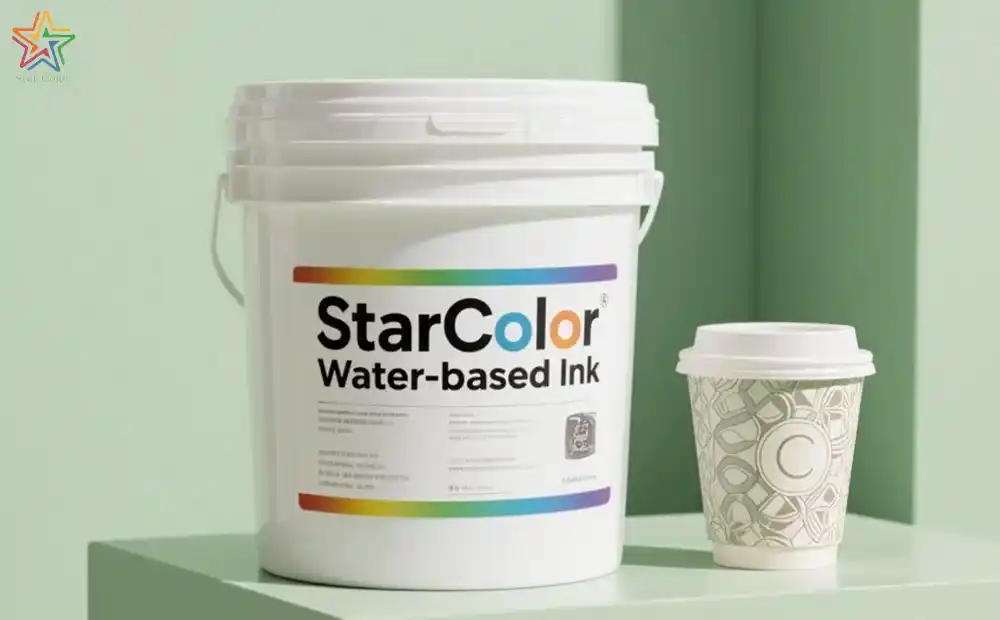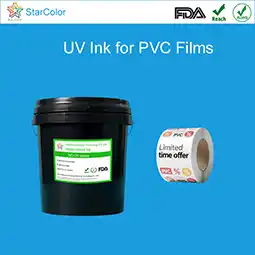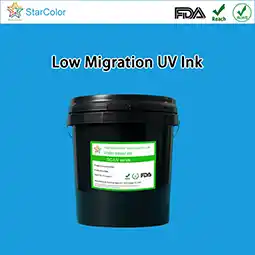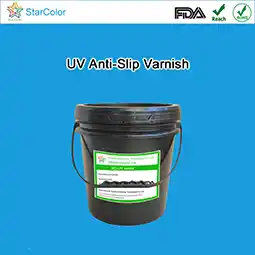Reducing VOC Emissions in Food Packaging with Modern Flexographic Inks
Date: Oct 09 2025 From: Star Color Views:
According to industry data, traditional solvent-based flexographic inks used in food packaging contain 300–500 g/L of VOCs. A single production line can emit more than 100 kg of VOCs per day, creating compliance pressure and raising environmental management costs.
Modern flexographic inks—especially water-based and UV-curable systems—have achieved remarkable VOC reductions through technological innovation. These inks balance printing performance, food safety, and sustainability, making them a core solution for the food packaging industry’s low-carbon transition.
1. Challenges of VOC Emissions in Food Packaging
VOC emissions in food packaging primarily originate from solvents such as toluene, ethyl acetate, and isopropanol. Their release and residue cause serious environmental and safety concerns across three main areas:
(1) Increasing Regulatory Pressure
Environmental regulations worldwide are tightening. In China, for instance, GB 38507-2020 limits VOC content in packaging inks to ≤100 g/L—≤50 g/L for water-based inks and ≤10 g/L for UV inks.
For solvent-based systems to meet these limits, environmental treatment equipment costs can exceed $280,000 (≈ CNY 2 million), with annual operating expenses of $5,000–7,000—a heavy burden for small and mid-sized converters.
(2) Food Safety Risks
Laboratory tests show that PE food bags printed with solvent-based inks can retain 8.5 mg/m² of residual solvents under 40 °C simulated contact conditions—well above the ≤5 mg/m² food safety threshold.
Long-term exposure may affect the liver and nervous system, posing particular risks to sensitive categories such as baby food and dairy products.
(3) Efficiency vs. Environmental Cost
Solvent inks require 5–8 seconds of hot-air drying, leading to high energy use and inconsistent adhesion.
Reducing solvent content lowers VOC emissions but raises viscosity, causing uneven transfer and slower printing speeds—from 300 m/min down to 200 m/min, cutting efficiency by roughly 30%.
2. Technological Advances in Modern Flexographic Inks
Modern flexographic inks have overcome these challenges through solvent substitution, resin design optimization, and curing innovations, achieving both low VOC emissions and excellent printability. Three mainstream technologies dominate today’s market: water-based, UV-curable, and alcohol-soluble inks.
(1) Water-Based Flexographic Inks — The Cost-Effective Green Choice
Water-based inks use water as the primary solvent, with VOC levels reduced to 30–50 g/L—only one-tenth that of solvent-based inks. Free from benzene and ketone solvents, they drastically reduce emissions at the source.
Key Innovations:
-
Adhesion Enhancement: Acrylic–polyurethane hybrid resins introduce polar groups (–OH, –COOH), improving adhesion on non-absorbent substrates like BOPP and PE by 40%. Cross-cut adhesion reaches 4B–5B, solving the “poor adhesion” issue.
-
Faster Drying: Fast-evaporating co-solvents combined with IR + hot-air drying cut drying time from 5 s to 2–3 s, matching solvent-based ink productivity (≈ 250–300 m/min).
-
Food-Grade Compliance: FDA-approved resins and organic pigments ensure heavy metal content ≤ 0.001 mg/kg and specific migration ≤ 0.02 mg/kg, meeting EU 10/2011 and FDA 21 CFR 175.300 standards.
Case Study:
A dairy packaging plant switched from solvent-based to a 45 g/L VOC water-based flexo ink. VOC concentration in the workshop dropped from 120 mg/m³ to 35 mg/m³—without additional exhaust treatment. Annual environmental cost savings reached $55,000, and solvent residues fell from 7.2 mg/m² to 1.8 mg/m², with zero food-safety complaints.
(2) UV-Curable Flexographic Inks — The Premium Zero-VOC Option
UV-curable inks use ultraviolet light to initiate polymerization, producing almost zero VOC emissions (≤ 10 g/L). With ultra-fast curing (< 1 s) and excellent durability, they’re ideal for premium packaging like gift boxes and metalized labels.
Core Technologies:
-
Low Migration Design: Hybrid epoxy acrylate + urethane acrylate systems combined with low-migration photoinitiators keep unreacted monomers ≤ 0.1% and total migration ≤ 0.005 mg/kg—safe for baby food applications.
-
LED-UV Curing: Sensitizers reduce curing energy requirements, allowing low-temperature curing that prevents substrate shrinkage.
-
Enhanced Durability: Nano-SiO₂ additives improve hardness to 2H and withstand over 600 abrasion cycles (500 g load). The ink layer resists acids and alcohol immersion for 24 hours without discoloration.
Case Study:
A premium chocolate brand used UV-curable flexo inks for aluminum foil packaging. VOC emissions dropped to near zero, eliminating the need for air-purification systems. The cured film withstood –20 °C to 80 °C without cracking, passed FDA + LFGB certification, and boosted export orders by 35%.

3. Application Scenarios in Food Packaging
(1) Flexible Packaging (PE/PP Film, Aluminum Laminates)
Requirements: High stretch resistance, rub resistance, and zero solvent residue for snacks, dairy, and frozen foods.
Ink Choice:
-
Water-based inks for mid-range applications (e.g., snack bags).
-
UV inks for high-end laminates (e.g., chocolate foil).
Process Optimization:
-
Surface Treatment: Corona-treated PE to ≥ 38 dyn/cm; apply 0.5 µm water-based primer on aluminum laminates to improve adhesion.
-
Drying/Curing: Water-based—50 °C hot-air + IR; UV inks—LED-UV 365 nm, 100 mJ/cm².
-
Performance Data: A frozen food packager adopting water-based inks reduced VOC emissions by 85%, solvent residue ≤ 1.2 mg/m², waste rate from 10% → 3%, saving $72,000/year.
(2) Paper Packaging (Boxes, Bags, Cups)
Requirements: Low odor, biodegradability, and sharp color reproduction for biscuit boxes, milk cartons, and cups.
Ink Choice: Water-based inks; UV inks for premium packaging.
Process Optimization:
-
Paper Moisture Control: Maintain 6–8% moisture to ensure color consistency.
-
Anilox Selection: 1000 LPI for fine graphics, 800 LPI for solid areas.
-
Performance Data: A paper cup producer using a 35 g/L VOC water-based ink achieved full odor compliance (GB 4806.4-2016), 280 m/min printing speed, +20% daily output, and saved $42,000/year in VOC treatment costs.
Conclusion
With stricter regulations and rising food-safety expectations, modern flexographic inks have evolved from an optional green solution to a mandatory transition path.
Water-based inks offer cost-effective, versatile coverage for mainstream packaging, while UV-curable inks provide premium, zero-emission performance—together forming a dual-technology matrix for VOC reduction in the food packaging industry.
For food packaging manufacturers, choosing modern flexographic inks is no longer just about compliance—it’s a strategic move to lower costs, enhance competitiveness, and build a sustainable brand.
 RU
RU EN
EN CN
CN















